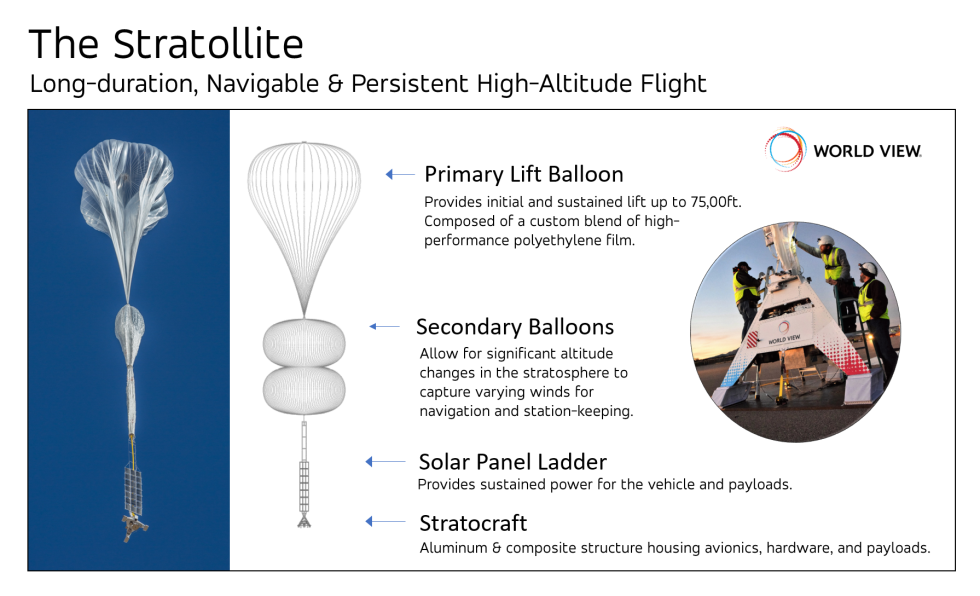https://arstechnica.com/?p=1517015
-
Track of the 16-day Stratollite mission from mid-May to early June.
World View
-
A ground-based telescope captured this image of a Stratollite vehicle in flight during an earlier mission.
World View
-
On Sunday, October 1, 2017, World View’s Stratollite took part in Spaceport Tucson’s inaugural launch.
World View
-
The launch led to a five-day flight, breaking World View’s previous flight duration record.
World View
-
The instrument payload can be seen at the bottom.
World View
When we last heard from World View, the company was performing something of an advertising stunt by launching a KFC chicken sandwich into the stratosphere with its balloon technology. Now the Arizona-based company has taken a significant step toward developing its remote sensing system for practical applications.
Prior to last month, the Stratollite system had never flown for longer than five days at a stretch. But from mid-May to early June, it completed a 16-day mission that demonstrated several key abilities. For more than eight days, the company said, the balloon maintained its position over a circular area on the ground about 120km wide. It also held station over a circle with a diameter of just 9.5km for 6.5 hours.
Flying in the stratosphere at altitudes between 15 and 23km, a Stratollite uses a primary lift balloon to reach its peak altitude, and then uses secondary balloons to rapidly rise and fall through the stratosphere. By essentially riding the winds, the vehicle attempts to maintain a relatively stable position over the Earth.
By holding position, a Stratollite’s payload—typically a camera, communications equipment, or other remote sensing equipment—allows customers persistent, near-real-time observations over large areas of interest. The company will have the capability to deploy Stratollites around the world, said Ryan Hartman, World View’s president and chief executive.
Eyeing commercial flight
In an interview with Ars, Hartman said the recent test is the “culmination of a lot of work that’s been going on at World View for a year,” which included the maturing of subsystems, proving out the vehicle’s capabilities, and making the leap from short flights to a multi-week mission. The company hopes to fly 30- and 60-day missions by the end of the year, and to begin offering commercial service in 2020.
The Stratollite vehicle offers greater persistence over a location and higher quality imagery than satellites in low-Earth orbit, Hartman said, along with lower costs and longer-duration of flights than high-altitude drones. “We’re engaged with customers today, and they’re eager for us to bring this capability to the market,” he said. In late 2018, the company closed on $26.5 million in Series C funding, and Hartman says it has enough capital to reach commercial operation.

World View
For now, controllers at the company’s facilities in Tucson, Arizona manage the flight of a Stratollite to find the most optimum altitudes for maintaining position over the ground. After World View proves the capability of the system, Hartman said the company plans to automate control of individual Stratollites so they can use their on-board sensors and a flight computer for most of a mission.
After a flight, the Stratollite vehicle makes a controlled descent so that it can recovered and flown again. In the case of last month’s flight, the Stratollite flew nearly 5,000km across Arizona, Nevada, Utah, and Oregon before landing within 120 meters of a targeted site.
Listing image by World View
via Ars Technica https://arstechnica.com
June 5, 2019 at 08:11AM
